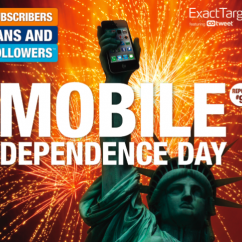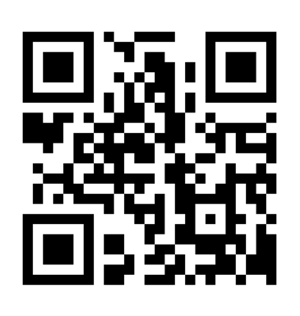Articles and News
NEW STUDY SHOWS 55% WILL PURCHASE FROM MOBILE EMAIL MARKETING | July 13, 2011 (0 comments)

New York, NY—According to a June 2011 report from ExactTarget, more than half of respondents reported making at least one purchase as a result of reading a marketer’s email on a mobile device.
The smartphone market is exploding, says the report. In February 2011, comScore reported that US smartphone usage had grown 60% in the previous 12 months, with 63.2 million Americans using smartphones as of fourth quarter 2010.
According to the Exact Target May 2011 survey:
- 89% of US online consumers age 15+ own a cell phone
- 41% own a smartphone (with email capabilities, web access, and other advanced functionality)
- 48% own a feature phone (typically limited to calling and text messaging)
- 11% don't own a cell phone
Statistics are slightly different for the luxury mobile space, however. According to a June 24 posting from L2ThinkTank's luxury digital marketing blog:
- 27% of the mobile population of the United States has household income of $100K or more.
- 44% of affluent mobile users have a smartphone; leaving 56% of the prestige mobile audience without access to one (yet);
- High-income mobile users are 62% more likely to have a smartphone than non-affluent users.
Although Android is a relative newcomer to the smartphone market, its overall popularity eclipses even the iPhone, likely due to its relative affordability, says the ExactTarget report. 33% of American smartphone owners have an Android, 25% an iPhone, 19% a BlackBerry, 23% “other,” including Windows. But among affluent users, the iPhone wins, according to L2’s findings. The BlackBerry Curve is most popular with lower-income users, says L2.
The smartphone has become a modern day Swiss Army knife, says the report, putting marketers in a multi-channel, multi-purpose environment. According to a survey from Prosper Mobile Insights:
- 52.9% of smartphone owners use all the functions of their phones.
- 30.4% use all the basic functions of their device, plus a few apps.
- Just 16.7% use their smartphones exclusively for calling, text messaging, and email.
- 18% of smartphone browse the Internet "constantly throughout the day," and 58% do so at least once per day.
- Facebook is the only social media outlet used by a majority of smartphone owners on a daily basis. 17% of those surveyed use their smartphones to check Facebook "constantly throughout the day," 35% check Facebook at least several times a day. In total, 50% check Facebook at least daily.
- The affluent are slightly less likely to share on social networks than the non-affluent, says L2.
Smart shopping. Among newer uses for smartphones, location based services (LBS) is a front runner gaining popularity. 28% of smartphone owners—translating to 12% of the total U.S. population—have used their phone at least once to “check in” using location-based services like Foursquare, Gowalla, Yelp, and Facebook Places. Women are more likely to use check-in services (37% of female users vs. 21% of males), and affluent consumers are 5% more likely to “check in” than consumers with incomes below $100K.
For the affluent, Foursquare, Gowalla and Yelp are more popular sites, while Facebook Places indexes higher with less affluent consumers, says L2. And older consumers check in even more than the younger set, says ExactTarget’s report. Within the 35-54 age group, 13% of men and 38% of women have done so.
The more affluent skew could be related to age—older consumers tend to have higher incomes than younger consumers—but ExactTarget says the difference is likely due to the fact that these women are in the demographic most likely to consider themselves "deal seekers.” This data suggests deal-seekers, more so than young hipsters, are gravitating to Foursquare and other LBS providers who offer savings based on proximity.
Quick Response (QR) codes and barcodes are just slightly less popular than check-ins. 24% of smartphone owners (10% of the overall online population) report having scanned a QR code or similar barcode to obtain more information about a product, business, or event.

QR code sample.
Push notifications, an emerging capability, allow companies to send messages directly to their app users, even when the app is closed. Push notifications are especially useful for conveying timely information like breaking news, exclusive sales, and sports updates, says ExactTarget.
According to the report, 16% of smartphone users say they've made a purchase as the result of a marketing message they received on their smartphone. Android users are the most likely to report making a purchase after receiving a message on their smartphones (21%), followed by Windows smartphone owners (19%), iPhone owners (17%), and Blackberry users (10%).
Email is the most effective mobile purchase trigger. Marketing messages delivered through email and read on a smartphone have driven more consumers to purchase than any other method. 55% of those who've made at least one purchase based on a mobile message report acting on an email. Text messaging (41%), Facebook (35%), and shopping apps (32%) also show a strong ability to drive purchasing behavior among the general population, but among affluent consumers, only 19% of those receiving text messages reported themselves likely to act, according to L2, which didn’t offer data on the other communications.
More than half of the 16% of consumers who've made a purchase after receiving a mobile message (about 9% of the total US online population) report that they've completed at least one purchase on their smartphone itself. It illustrates how consumers' comfort level with mobile purchases is increasing, while also highlighting the fact that people who buy as a result of mobile messages are likely to complete these purchases through multiple channels.







